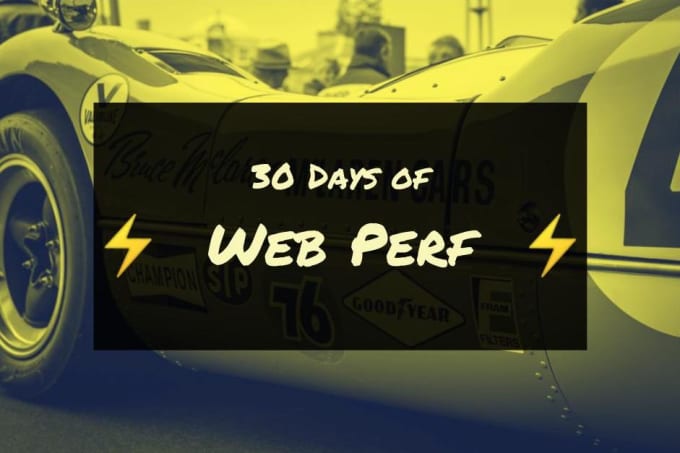
Making Google Fonts Faster in 2022
If you use Google Fonts, a few additional steps can lead to much faster load times.
My experiment with 30 days of web performance tips. All packaged up for your temporary viewing pleasure. Results from a Twitter series by Sia Karamalegos.

In November of 2019, I decided to try out a new way to deliver web performance tips to my Twitter followers. Learning web performance can be overwhelming, so I focused on small bits of information. Thus was born my #30DaysOfWebPerf series.
Twitter is great for small bits of info, right? Well, it was great in some ways and not so great in others. I'll tell you why in this post.
You can see the full series in this Twitter Moment, and here's a preview of Day 1:
Day 1 of⚡️ #30DaysOfWebPerf ⚡️
— Sia Karamalegos (@TheGreenGreek) November 1, 2019
For our 1st day in this series on web performance, we're tackling the 🐘 in the room.
Lighthouse is an amazing tool that helps you identify specific speed problems on your website... [thread]https://t.co/VDwXemsBf7#Lighthouse @ChromeDevTools pic.twitter.com/GZhWLoGEdx
Each day, I would write a short thread on Twitter. Then I would re-publish that content on my website and Dev.to.
The benefits were twofold for me:
The great thing about the web is that it's always changing. The bad thing about the web is that it's always changing. 😅 This makes it challenging to document anything as we always have a moving target. I like to edit my blog posts to keep them updated with new features, discoveries, and opinions.
Unfortunately, tweets are not editable. They are meant to be consumed around the time they are written. Later, they are best left in the dust.
I eventually stopped posting to my website as it flooded my blog post list. Those posts drowned out my higher-quality, more in-depth posts. Google Search values pages with higher on-page time. Dwelling can mean that people find it more engaging. Three tweets on a page don't take long to read. They are probably best kept on Twitter.
Twitter embeds are ugly. And I mean really ugly. My performance scores are at least 25% lower on any page that has a Twitter embed. I could try to find a tool like lite-youtube-embed or make one myself. Do let me know if you find one! Or I could recognize that tweets are not the right medium for long-term thought storage.
This was a great way to get temporary buzz on a topic, help a few folks out in passing, and gain new followers. If I did it again, I would not bother trying to document them on my site. I'm a big believer in owning your own content, but not all content weathers time well.
Lately, I've been signing up for several 1-week email "challenges" or "courses". Maybe it's a new fad in 2021. The content in each email seems to be shorter than a typical blog post but longer than a tweet. And if you manage it as a campaign that someone can sign up for at any time, then you can edit it when it gets out of date.
What do you think? What are some good ways to deliver smaller chunks of serialized content? Tweet at me with your thoughts.
I'm a freelance performance engineer and web developer, and I'm available for your projects.
Hire me
If you use Google Fonts, a few additional steps can lead to much faster load times.

What tools are web performance engineers using to measure site speed in 2021?

Discover all JavaScript downloaded for a site and used vs unused in a handy data visualization.
If you liked this article and think others should read it, please share it.
I see some people regularly share records from their phone. TikTok-style? (I'm not there, can't tell). @FrancescoCiull4 springs to my mind as representative. source
I feel that you’re trying to convince yourself to do email campaign thing. Go ahead, it’s a good idea! source
Lol. Maybe. I don't know because i like the simplicity of buttondown for newsletters and didn't want to go so heavy with convertkit. source
These are webmentions via the IndieWeb and webmention.io. Mention this post from your site: